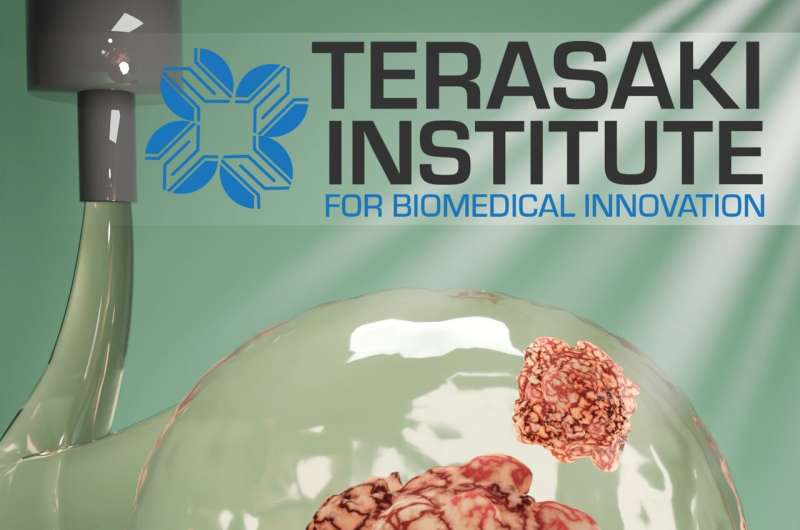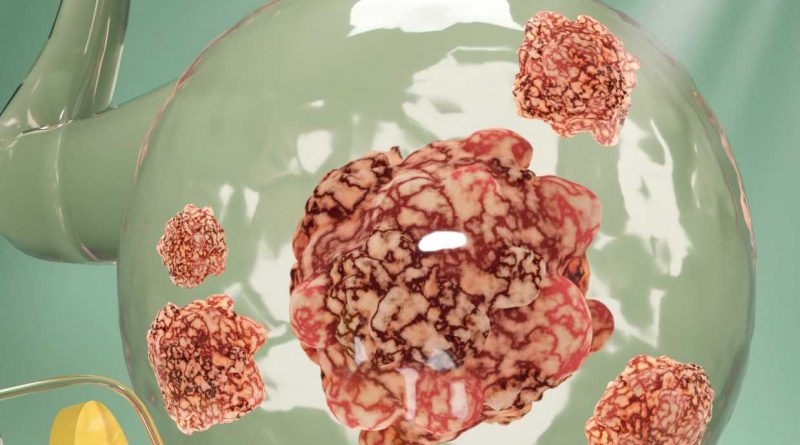Enhanced tumor modeling using Laponite bioinks for 3D bioprinting

Scientists from the Terasaki Institute for Biomedical Innovation (TIBI) have developed a nanoengineered bioink with improved bonding and cross-linking capabilities for 3D bioprinting of tumor models. A key component of this bioink is Laponite, highly charged, disk-shaped, crystalline nanoparticles.
As explained in their paper published in Biofabrication, these nanoparticles were shown to enhance the biological signaling that occurs in the tumor microenvironment so that more accurate tumor models can be created for study and anti-tumor drug development.
Tumor microenvironments are complex, with a supportive, connective tissue matrix containing multiple cellular components such as tumor cells, immune cells, organ specific cells, and collagen-producing cancer-associated fibroblasts. In addition, there is extensive cell-to-cell physical interaction and interactive signaling via a variety of biological factors that are difficult to model in an accurate and representative manner.
The use of 3D bioprinting offers a versatile approach for creating in vitro tumor models where precise 3D tissue structures can be created. To create an in vitro model, the printers use a cell laden biomaterial solution termed bioink custom made for the intended tissues.
The bioinks in this study were comprised of cancer and normal cells from the tumor microenvironment, which were embedded in a biocompatible gel, typically a type of polymer. This cellular/gel mixture must be optimally formulated to exhibit mechanical and biofunctional properties that accurately recapitulate the tumor microenvironment.
In order to achieve these properties, the TIBI team chose gelatin methacyloyl (GelMA) as the polymer base for their bioink, a biocompatible material with tunable properties for structural stability and porosity, with binding sites conducive to cellular adhesion and survival. Adding Laponite to the GelMA not only created a reinforced network within the bioink, but also improved printability by conferring shear-thinning properties—the ability to deform under stress and then quickly self-recover. While using higher concentrations of GelMA and Laponite, the team was able to create bioinks with significantly improved shear-thinning properties.
In initial tests of their new composite as a biomaterial for the fabrication of a tumor model, the scientists made different GelMA/Laponite formulations and used them to encapsulate human pancreatic cancer cells. The formulations which gave optimum cell viability were identified and used in creating 3D bioprinted multicellular tumor models.
These multicellular models were made by adding fibroblasts, cells which are pivotal to pancreatic cancer tumor progression, to the GelMA/Laponite/pancreatic cell bioink. Tests of these models showed that the cells had good viability, particularly with higher Laponite concentrations. Furthermore, higher concentrations of Laponite were also observed to increase the size and distribution of co-aggregations of the two cell types; this more fully depicts the native pancreatic tumor structure and its promotion of cell-to-cell interactions.
The team went on to study the effects of Laponite on the gene expression of various biomarkers which are promoters or indicators of tumor progression in pancreatic cancer. They found that increased Laponite concentrations upregulated production of tumor cell growth factors, as well as remodeling and cell differentiation genes, by 10- to 20-fold.
The effect of Laponite on gene expression was even more pronounced on the fibroblasts, with overall upregulation of their gene pools, especially for genes related to growth factors, which were increased up to 60-fold. As fibroblasts play an important role in pancreatic tumor progression via signaling by these growth factors, this is a significant demonstration of Laponite’s influence.
The improved signaling between cancer cells and fibroblasts by released biological factors also increased the expression of genes that are related to the cell cycle—specifically, genes that indicate a decrease in the proliferation of cancer cells. The decrease in the proliferation of cancer cells is known as cancer dormancy, which is one of the factors affecting resistance to chemotherapy and cancer recurrence after treatment.
“Our study of the effects of Laponite on 3D printed tumor models has shown that not only does Laponite improve the mechanical characteristics of the model, but it can also selectively influence the biological signaling that are a part of tumor progression,” said Ali Khademhosseini, Ph.D., TIBI’s Director and CEO. “This gives us the versatility to re-create more accurate tumor models of different types so that targets for effective therapeutic drugs can be identified.”
More information:
Natan Roberto de Barros et al, Gelatin methacryloyl and Laponite bioink for 3D bioprinted organotypic tumor modeling, Biofabrication (2023). DOI: 10.1088/1758-5090/ace0db
Journal information:
Biofabrication
Source: Read Full Article
